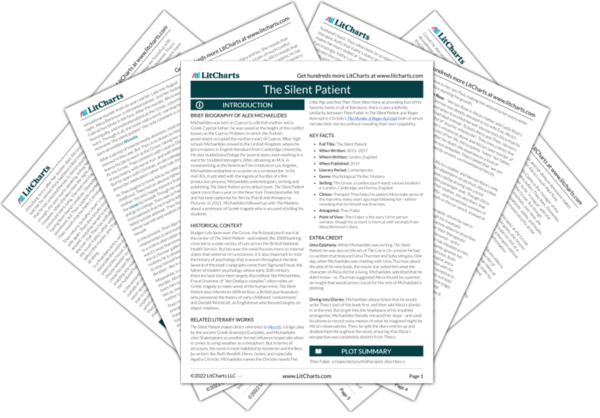Previous
Part 2, Chapter 8
|
Previous
Part 2, Chapter 8
|
The Silent Patient: Part 2, Chapter 9 Summary & Analysis |
Next
Part 2, Chapter 10
|


Upgrade to unlock the analysis and theme tracking for all of The Silent PatientThe Silent Patient!
Get LitCharts A+